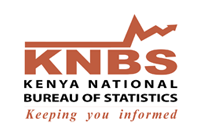 The Leading Economic Indicators highlights trends in Consumer Price Indices (CPI) and inflation, interest rates, exchange rates, international trade, agriculture, energy, manufacturing, building and construction, tourism and transport.
The Leading Economic Indicators highlights trends in Consumer Price Indices (CPI) and inflation, interest rates, exchange rates, international trade, agriculture, energy, manufacturing, building and construction, tourism and transport.
Consumer Price Index (CPI) declined from 165.37 points in January 2015 to 164.67 points in February 2016. The overall rate of inflation dropped from 7.78 per cent to 6.84 per cent during the same period. In February, 2016 the Kenyan Shilling remained generally stable against major currencies.
The average yield rate for the 91-day Treasury bills, which is a benchmark for the general trend of interest rates, declined from 12.34 per cent in November 2015 to 9.69 per cent in December 2015. However, the inter-bank rate fell to 5.31 in December 2015 from 8.85 per cent in November 2015.
The Nairobi Securities Exchange (NSE) 20 share index contracted from 4,040 points in December 2015 to 3,773 points in January 2016, while the total number of shares traded decreased from 474 million to 422 million shares during the same period. The total value of NSE shares traded dropped from KSh 15.11 billion in December 2015 to KSh 13.00 billion in January 2016.
Broad money supply (M3), a key indicator for monetary policy formulation rose from KSh 2,650,470 billion in December 2015 to KSh 2,617,553 billion in January 2016.
Gross Foreign Exchange Reserves decreased from KSh 999.00 billion in December 2015 to KSh 976.00 billion in January 2016. Net Foreign Exchange Reserves went down from KSh 493.53 billion in December 2015 to KSh 470.25 billion in January 2016. Download Leading Economic Indicators February 2016..
